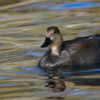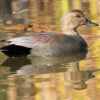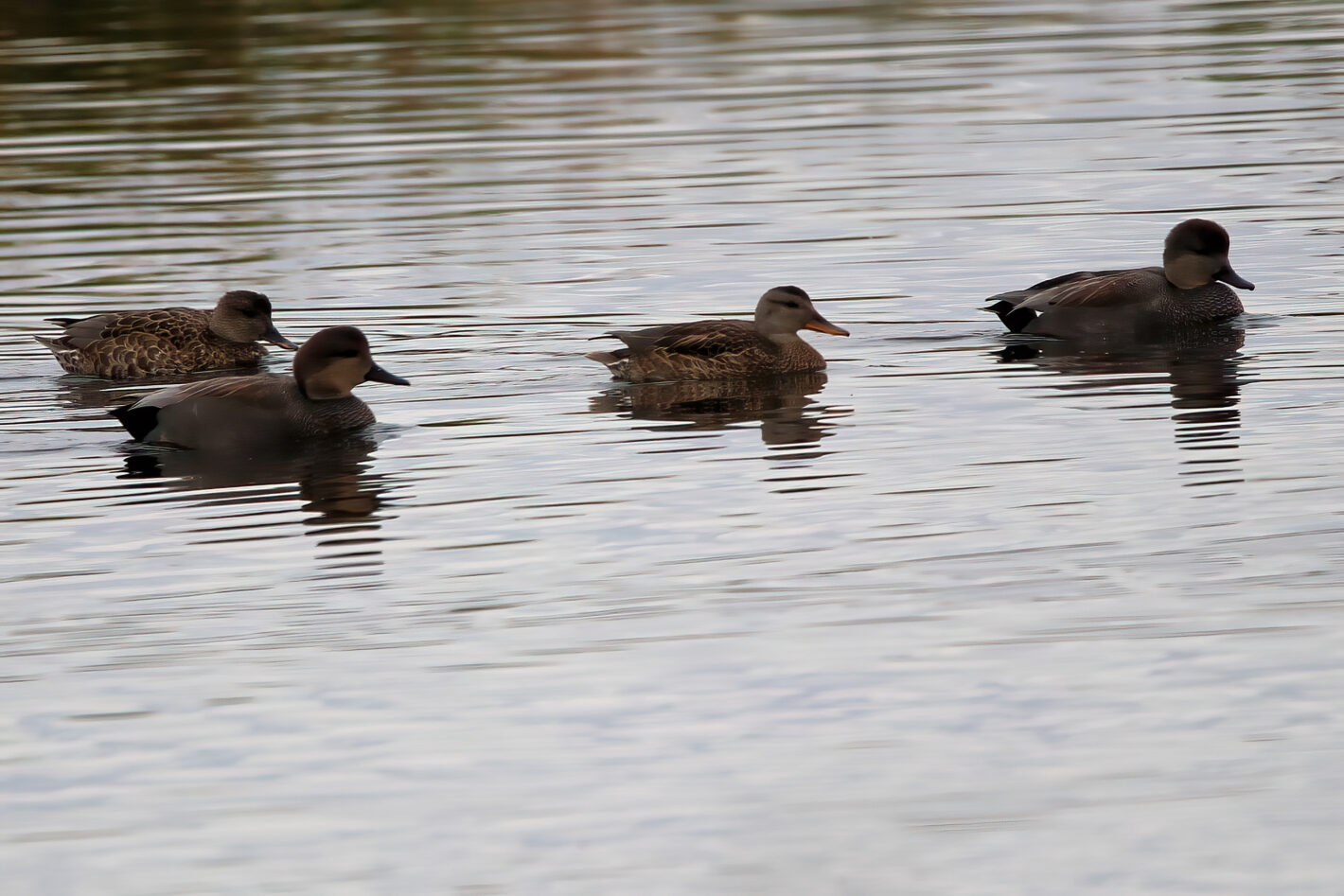
 Generally speaking, Alberta’s 24 duck species make great targets for the wildfowl and bird photographer. Chances are if you are near water, be it Lake Chestermere, McElroy Slough, Elliston Park, Shepard Slough or the Bow River, ducks may indeed be there to greet you. One species often overlooked, is simply known as the Gadwall, so named around the year 1666. This dabbling duck tips like a teapot, with tail up and head down to graze on the vegetation and invertebrates below. Without the flashy colors or markings of better known ducks, this elegant species can easily be overlooked and may not attract your camera lens.
Generally speaking, Alberta’s 24 duck species make great targets for the wildfowl and bird photographer. Chances are if you are near water, be it Lake Chestermere, McElroy Slough, Elliston Park, Shepard Slough or the Bow River, ducks may indeed be there to greet you. One species often overlooked, is simply known as the Gadwall, so named around the year 1666. This dabbling duck tips like a teapot, with tail up and head down to graze on the vegetation and invertebrates below. Without the flashy colors or markings of better known ducks, this elegant species can easily be overlooked and may not attract your camera lens.
This autumn we couldn’t help but notice an increased number of Gadwalls at some of our favorite birding locations. Based on our observations, the male and female Gadwalls have already paired up for next spring. This species has a large square shaped head, defined by a steep forehead. When compared to the well known Mallard, the Gadwall has a thinner, black bill. Males sport an intricate pattern of gray, brown and black feathers, which appear to look like white-fringed feathers. Notably, the male has a black patch of feathers on the rear end. Females can be more difficult to identify as they are very similar in appearance to female Mallards. They sport buff and brown patterned feathers and a dark orange and black bill which is thinner when compared to that of a female Mallard. In flight, both sexes display white hued secondary flight feathers, the male more so.
One location that provided fine opportunities in October to watch Gadwalls was Ralph Klein Environmental Park. Designed with multiple shallow “channels” of water to help filter out and improve the quality of storm water before it enters the Bow River, this park is home to 178 species of birds and wildfowl. Gadwalls gather in small flocks often near or mixed with Mallards in the western reaches of the water courses. One interesting behavior to watch for is food theft by Gadwalls. If American Coots are nearby and feeding, Gadwalls will snatch vegetation from the bill of a surprised coot or other diving duck species.
Gadwalls head to northern Alberta and British Columbia to create the next generation. Fortunately for birders, the rest of the province is a part of their migration route, heading to the southern United States, Mexico and Central America for our winter months.
Mallards have a distinctive “quack” while Gadwall males have a distinctive “burp”. Following Carl Sandburg’s quote, unfortunately, Mallards are indeed the most shot ducks in North America, followed by Blue-winged Teals and thirdly, by Gadwalls, with 1.25 million killed in 2020. You may think life is indeed short as a Gadwall. The oldest recorded age for a male Gadwall is 19.5 years. This Gadwall was leg banded in Saskatchewan in 1962 and shot in Louisiana in the fall of 1981.
My preference is shooting Gadwalls with digital technology and appreciating their natural beauty and quaint burps, before they fly south, with hopes of seeing them next year.




